|
Use safe mirror play to make tummy time more enjoyable for your baby! Who's that Baby in the Mirror? (Rumble Tumble Tummy Time Activity Video #2) explains how to:
Music Credits:
Lazy Day Musician: Jason Shaw URL: https://audionautix.com Tiny People Musician: Alexei De Bronhe URL: https://icons8.com/music Ice Cream Musician: Ilya Truhanov URL: https://icons8.com/music Whenever Musician: LiQWYD URL: http://www.soundcloud.com/liqwyd
0 Comments
Make tummy time fun and expand your baby's world by reading books! A complete explanation of the benefits, how to tips, a song, and an alternative position if baby hasn't yet learned to enjoy being on the tummy! Learn to use the sign for BOOK so your baby will learn how to ask you for special "story time" cuddle sessions! Enjoy what you learned? Want more! Let's get ready to Rumble...and Tumble! 🤣 Sign up for our series of four 45-minute Baby and Me playgroup sessions called Rumble Tumble Tummy Time. 😄
St. Croix Birth & Parenting's President, certified Baby Signs instructor, Christelle Hagen, HCHD, ICI, shares tips for making tummy time fun and a great way to bond with your baby in this new video recently posted to our new YouTube channel! Curious? Want more? Sign up now for our four-session tummy time online playgroup!
I am so excited to share my new breastfeeding video! In the video I introduce the viewer to St. Croix Birth & Parenting's Breastfeed {Naturally} community and BfN's FREE online course for mothers preparing to breastfeed that I developed this summer, called "Succeed When You Breastfeed." The SWYB course is jam-packed with great natural mama info--I am so proud of it! My first students are joining the course now, and I couldn't be more pleased. Check out my video--and let me know what you think! Sign up for our newsletter, Currents, if you're interested in getting a link to "Succeed When You Breastfeed." 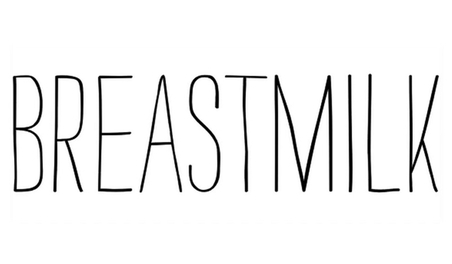 With both my husband and I working on our family farm, and having six homeschooled children, there is nearly always somebody around the homestead. However, finding myself with only a sleeping baby in the house over the weekend, I took the opportunity to watch the documentary, Breastmilk, the latest from executive producers Ricki Lake and Abby Epstein (who previously directed and produced The Business of Being Born; and More Business of Being Born). While there were certainly troublesome segments (such as the “feminist” who graphically exalted “lactation porn”...and the random images of spouting breasts) which require that I post a Do Not Watch In Mixed Company or In the Presence of Children warning, the overall message—that successfully breastfeeding a baby in the United States is practically a miracle—came through loud and clear. By following a handful of mothers from late in pregnancy through their baby’s first year of life, Breastmilk reveals how terribly difficult it is for American mothers to make milk. In watching the documentary, I found myself relating to the one mother in the documentary who successfully nursed her baby as she described the odd experience of lending a sympathetic ear to all of her friends who could not breastfeed, but feeling there was no place to share her own prosaic story of breastfeeding success. Breastmilk left me with feelings akin to survivor’s guilt. While my own social circles contain a far higher percentage of successful breastfeeding mothers than were included in the documentary, I have experienced a less extreme version of the same story, as it seems that breastfeeding problems are the rule, not the exception.
Similarly, many mothers find nursing in public (a necessity unless you never leave your house) incredibly uncomfortable and embarrassing. Carrying a bottle of pumped milk magically eliminates this embarrassment. No one looks twice when a mother feeds her baby with a bottle. However, as I can attest from an outing just yesterday, feeding a baby from the breast—even with a nursing cover—merits triple takes! It is simply ridiculous that an act that defines our species, that our very species has relied upon for survival, is seen as something immodest, scandalous, and by some, even disgusting. ...Should have worn my How have I been able to feed six children without a bottle in the house? And more directly: Am I a hippie who also smokes joints and flips peace signs at the least provocation? Sorry; no joints and no peace signs—not even during the “passing of the peace” at church—but I probably still qualify as a hippie. I home birth; home school; and have a home business—teaching natural birth classes among other things. On more than one occasion, I have actually been barefoot and pregnant. But my “style” of breastfeeding wasn’t the result of following the example of my peace-loving foremothers; it was the result of following the example of one woman: Sheila Kippley. While the two Business of Being Born documentaries provided alternatives to medicalized childbirth—namely, natural childbirth; out of hospital births; midwives; and doulas--Breastmilk has no practical help to suggest. A new mother could easily conclude after watching the film that if she doesn’t have a close female friend or partner willing to share in the nursing in order to keep her baby alive, she is destined for breastfeeding failure.
In natural childbirth classes, the “Cascade of Interventions” is a common topic of discussion. I have not noticed the same concept discussed often enough in reference to breastfeeding, although interventions in the childbearing process, both before, during and immediately after birth and throughout the early postpartum weeks definitely affect the ability of the mother to initiate breastfeeding and keep breastfeeding. (View a chart here that I share in my natural birth classes.) Furthermore, there are interventions in the breastfeeding process itself that directly impact breastfeeding success. Just as the natural childbirth movement has been successful in explaining those interventions in the normal birthing process that can result in poor outcomes for the birth, there needs to be a Natural Breastfeeding movement that informs and educates mothers and families about the interventions in breastfeeding that result in poor outcomes for breastfeeding, and more importantly poorer outcomes for babies. Though the makers of Breastmilk failed to present an alternative to what could be termed “technological” breastfeeding, the reality is that the “natural breastfeeding” model already exists and was described in seven steps over forty years ago: ecological breastfeeding. When Sheila Kippley described what some of its followers call “eco breastfeeding” she must have been considered very radical indeed. In 1971, breastfeeding initiation rates (mothers who nursed at least once before being discharged from the hospital) hit an all-time low of 24%. (1) While breastfeeding initiation rates are much higher today (with 79% of mothers initiating breastfeeding in the United States in 2011) (2), they are still below the Healthy People 2020 goal of 81.9% in all but 17 states. (3)
In the coming weeks, I will explain in detail the seven components ("Standards") of Sheila Kippley’s Ecological Breastfeeding Program, and then conclude with a series of blog posts written for people in positions key to breastfeeding success or failure, providing specific suggestions for things we can do to support breastfeeding mothers and families. I invite all those of goodwill to join with me in promoting Natural Breastfeeding, for the health and well-being of mothers and babies everywhere. Note to Lake and Epstein: time to start filming More Breastmilk. Three Things You Can Do to Support Natural Breastfeeding NowSign up to receive future blog posts from St. Croix Birth & Parenting by submitting your email address in the box on the right-hand column of this webpage. Support mothers and babies by liking the Natural Breastfeeding page on Facebook. Feed a Mother and Baby: bring a meal to a breastfeeding mother near you. Include a thank you card. References:
(1) "Low Breastfeeding Rates and Public Health in the United States," American Journal of Public Health, 2003 December; 93(12)2000 (2) "Breastfeeding Report Card United States 2014" Retrieved from: http://www.cdc.gov/breastfeeding/pdf/2014breastfeedingreportcard.pdf (3) "Breastfeeding Benefits & Barriers: Breastfeeding Statistics in the United States" Retrieved from: http://www.breastfeedingbasics.org/cgi-bin/deliver.cgi/content/Introduction/sta_us.html (4) "AAP Reaffirms Breastfeeding Guidelines" Retrieved from: http://www.aap.org/en-us/about-the-aap/aap-press-room/Pages/AAP-Reaffirms-Breastfeeding-Guidelines.aspx (5) "The World Health Organization's infant feeding recommendation," Retrieved from: http://www.who.int/nutrition/topics/infantfeeding_recommendation/en/ 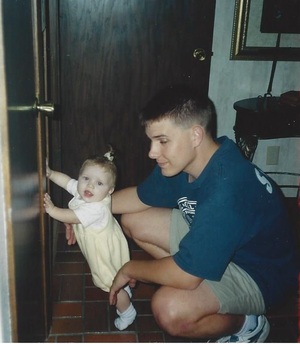 Chris & E-R shortly after his AK trip Chris & E-R shortly after his AK trip When our eldest daughter was nine months old, Daddy went to Alaska for his annual commercial salmon fishing adventure...er...business trip. The trip was to last for four weeks. The change in our normally exceedingly placid daughter was astounding. For three days, she cried inconsolably. We far underestimated how important her father was to her, even at such a young age. Needless to say, that was the last time Daddy left for such a long time. When Daddy finally returned, I took her to the airport to pick him up. I remember in vivid detail what happened next. He greeted us in his usual exuberant way. Ready to be done with my "adventure" in single parenting, I was thrilled to see him. She just looked at him for a brief moment and lost interest. She had forgotten her own father in four weeks. He sat next to her car seat on the trip home. He started joking and playing with her. Her eyes suddenly sparkled with recognition; one might even say with amazement. Sometime in that trip home from the airport, she realized that her long lost daddy had returned. According to CDC data from 2001-2006, Minnesota ranked as the sixth lowest state in the Union for maternal mortality, with 5 maternal deaths per 100,000 liveborn infants. Wisconsin’s rate was over double Minnesota’s with 10.9 maternal deaths per 100,000 liveborn infants, putting Wisconsin in the lower half of the states at 29th lowest. Compared to a maternal mortality rate of 12.1 for the United States as a whole, both Minnesota and Wisconsin are doing maternal health care rather well. But compared to the Healthy People 2010 goal of no more than 3.3 maternal deaths per 100,000 live births, both states have room for improvement. Recently, a 32 year old Minneapolis woman with a two week old infant suddenly died of unknown causes, though the death may have been related to a blood clot. Her sudden loss leaves a terrible hole behind in her family and community, and her loss is also experienced by her infant. 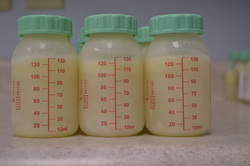 While, thankfully, most of us will not personally experience maternal mortality among our family or friends, it is important to be prepared should it occur. Those surrounding this Minneapolis family have rallied to their aid, offering practical help including breast milk donations. Offering mother’s milk cannot begin to fill the hole left by the death of the baby’s mother, but it does provide practical "next best" nourishment for the child, and no doubt eases the emotional strain on the surviving family. For those interested in learning more about donating breastmilk (though not directly to this family)—or those who need to be on the receiving end—the Health Foundations Family Health & Birth Center takes and offers donations, as does the University of Minnesota Medical Center, Fairview. Several other groups that have local chapters for milk sharing are Eats on Feets and Human Milk for Human Babies. Donors are most often breastfeeding moms who pump or express milk above their own baby’s needs, milk that can be shared with another baby. A less commonly known source of breastmilk is the mother who has lost a baby. It is possible to pump or express and collect milk for a time to donate to another baby in need, a gift known as “Legacy Milk.” For more information, please contact me. 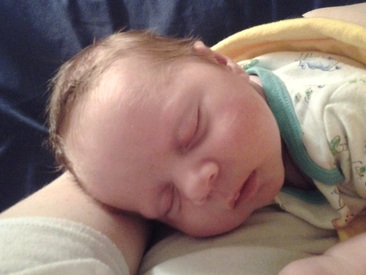 While her milk is invaluable to her baby, a mother is more than just a source of food and comfort. Even very young babies grieve the loss of those closest to them. All babies, especially very young ones, need lots of holding and attachment. For babies who have lost a mother or father, this need is even greater. It is ideal if another person can take up where the mother was forced to leave off due to her unexpected passing away—helping the baby to bond with one other person is key to the baby’s normal emotional development. The infant will need lots of holding and skin-to-skin contact. Swaddling and infant massage will also help baby to feel more secure during this difficult time. Talking with the infant about what happened is important; even if he or she does not understand the meaning of the words, the tone of understanding that baby misses his or her mother and your desire to be a source of comfort will come through loud and clear. It is said that the hardest thing a parent can endure is the loss of a child. It is not as commonly said that the hardest thing a child can endure is the loss of a mother (or father). Simply because a person cannot express his or her sorrow in words does not mean it does not exist. Baby may express his grief in long bouts of crying, or in sleeping more—or less—than usual, or changes in feeding patterns. While it is crucial that the very young baby form a close attachment to one person, it may feel overwhelming for a widower to cope with these changes in the baby’s behavior in addition to dealing with his own grief. Friends and extended family can be a real blessing if they pick up the slack and spell the surviving parent or other caregiver with the tasks of feeding, holding the baby, changing diapers, giving the survivor an opportunity to shower or eat a meal, providing meals, housecleaning, or helping with the care of older children. Simply knowing that you are praying for them will give them courage and hope. Surrounding the infant and his or her family with love and support is an invaluable gift that will help the family—and the baby—to recover in time. The family will never be the same as it was before, but it will develop a new normal and can grow strong again. For More Information: Alan D. Wolfelt, Ph.D., Helping Infants and Toddlers When Someone They Love Dies
The one and only reason we even knew about attachment parenting in those early days was exposure to these ideas through the Couple to Couple League, the organization that taught us Natural Family Planning. Although CCL has changed, at that time, it was heavily influenced by La Leche League and its teachings about "natural mothering." While CCL wasn't the only voice promoting 'natural mothering,' it was the only one in our circles. While the Couple to Couple League may have distanced itself from "natural mothering," there are now many other voices advocating attachment parenting in general, or aspects of it: notably, Dr. William and Martha Sears, Mothering.com, Dr. James McKenna, the La Leche League, Attachment Parenting International, Dr. Nils Bergman, and Dr. Jack Newman. Notice all the doctors in there? Attachment parenting is no longer the exclusive territory of hippie housewives. (Maybe it never was, but it is good to see all the amazing docs out there finding the research and doing the writing and promoting to support the fact that mothers and babies are meant to be together.) I'm a firm believer that parents have been given, by God, the right and the responsibility to raise their children in the way that seems best to them, in their circumstances, with their unique mix of personalities, resources, community and culture. It saddens me just as much now as it did back then, that simply because I might choose to parent my child a bit differently than someone else, this may somehow be perceived as a judgment against them. I believe that most parents are doing the best they can raising their children, using the information and resources they have.
The Searses teach what they call the seven "b's" of attachment parenting: birth bonding; breastfeeding; babywearing; bedding close to baby; belief in the signal value of baby's cry; beware of baby trainers; and balance. If you are curious about any of these aspects of attachment parenting (or all of it!), what follows is my review of attachment parenting, as used within our family for the past thirteen years.  The Joyful Moment just after birth The Joyful Moment just after birth Birth bonding? I've done it six times! This one is pretty well accepted in American society, at least for vaginal births. But in case you've just emerged from subterranean life, bonding at birth makes breastfeeding easier and positively impacts the relationship between mother and baby for years to come, as well as helping to prepare your baby for healthy relationships with others. Having a doula present at your birth and after can be a great resource in helping you bond with baby, both because she can give you helpful bonding tips, as well as run errands so you and your spouse can focus on getting to know your baby. Most articles about birth bonding are quick to point out that missing bonding at birth doesn't doom you to a distant relationship with your child or curse your child to become the next dictator. So what to do if you miss that early bonding? Well, besides this little hug, pictured at the left, I missed early bonding with my little son, who had serious complications at birth and spent his first fifteen days in the NICU, only able to nurse for the first time about a week after birth. I am delighted to say that we both persevered and he's a happy, healthy, exclusively breastfed baby today. The keys to bonding with your baby, despite a delay, are to touch or be near your baby consistently, to talk with your baby, to be responsive to baby's cues, to get good support when your baby is ready to try breastfeeding, and to negotiate with your baby's health care providers for what's important to you, if need be. 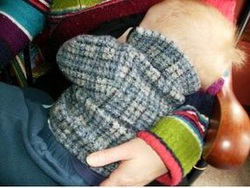 Discreetly nursing one of my little ones Discreetly nursing one of my little ones Speaking of breastfeeding, yeah; it's amazing! I LOVE it and have breastfed six babies (in staggered shifts--not all at once!) for over 13 years, with only two breaks of about six weeks each when two of my children weaned at the end of a couple of my pregnancies. Pacifiers have been unnecessary, although I would admit that we've discovered their usefulness in the car with our sixth baby. ;) On the topic of pacifiers, It was the Couple to Couple League who first introduced us to "ecological breastfeeding," or what I call "natural breastfeeding." In a nutshell, natural breastfeeding is nursing your baby without the use of artificial nipples, with responsiveness to baby's cues, day and night. There are advantages to natural breastfeeding, as well as some cons, and this important, neglected topic is one I will address soon in another blog post. If you want tips for getting a good start or need help, attending a local La Leche League meeting is a great idea. I am also available as a peer counselor and experienced nursing mom! 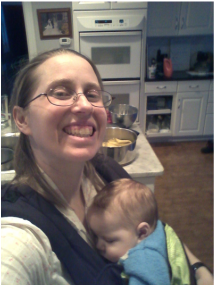 Preparing supper while holding baby! Preparing supper while holding baby! Babywearing? I can't get enough. I have worn my babies in backpacks, slings, frontpacks, and now, my brand new soft structured Boba. It's not only cuddly and sweet to wear your baby, it's the only way a busy mom can get things done, if you choose not to use swings or other baby gear! Here a shout-out to Baby Wearing International is appropriate. BWI has local chapters, including one in the Twin Cities area, where you can go and try on and even check out carriers before investing in them. What works for another mom and baby may not work for you at all, depending on body sizes, baby's age and stage of development and the reason you need or choose to babywear at any particular moment. BWI meetings are also a great opportunity to meet other AP moms, especially if you live in an area where attachment parenting isn't common. 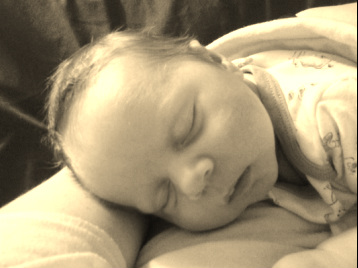 First time I got to hold this sleeper without his feeding tube First time I got to hold this sleeper without his feeding tube Bedding in? I adore cuddling with my sleeping baby or toddler. Our children have been and continue to be consistently great sleepers at night, unless they are sick. Thus far, among our six kids, we have had no bed wetting and no night terrors, including our kids who have graduated from the family bed. And to clear things up--no; we don't continue to sleep with our children forever! The exact age of weaning from the family bed has been different with our various children, but regardless of age, we take as much pride in our children developing night-time independence as we do when they take their first steps, or say their first sentence, or paint their first piece of art.... Night-time independence happens gradually and naturally. Just as a child doesn't go from crawling to walking flawlessly in one day, night-time independence is a gradual process, as the child learns to sleep more deeply, to hold his bladder, how to cope with scary dreams, how to cope with the different sights and sounds of night, etc. It's a lot to learn and we as parents need to be patient and trusting as our children move through this process. Safety concerns? Click on the Dr. McKenna link above. While we do practice the family bed, safe bed sharing is important; and bed sharing is not for everyone. Many people find sleeping with baby in a sidecar arrangement (with a co-sleeper) works better for their family than bed sharing. Concerns about intimacy? We have six kids, people. Need I say more? Responsiveness to baby's cry? Yep. With our first, I responded at the first teeny whimper. Demands on my time are a lot more now than they were then, so it's true that I am not as much of a helicopter mom now as I was then. Yet if I do fail to reach the baby before he is crying, I like to hold him and validate his feelings of fear or sorrow, with words, sounds and body language meant to convey, 'I am here now; you are safe.' 'Beware of baby trainers.' This is simply the old old idea of letting the baby cry it out to train the baby to either stop using crying as a method of communication altogether because nobody is ever going to come, or, more commonly, letting the baby cry it out to train the baby to sleep through the night. Either way, the idea is to let the baby cry without picking up or sometimes even going to the baby. Keeping in mind my statement above about the fact that I truly believe that God gives a particular child to a particular family, and parents need to decide what type of parenting is best for their family, I do take issue with the cry it out strategy because it is rude. I wouldn't simply stand there while an older friend or family member were crying. I would at least attempt to help them or comfort them in some way. I fail to see how ignoring the tears of a very young person is any less rude. Enough said. 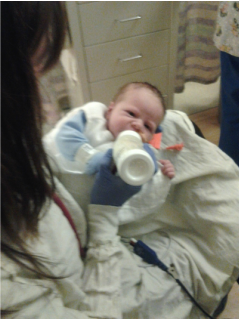 Baby getting his first bottle at age 9 days. Baby getting his first bottle at age 9 days. Finally, balance. This one eluded me till I was debilitated by postpartum anxiety, when we only had little ones in the house. It is hard for us perfectionistic moms to realize the following:
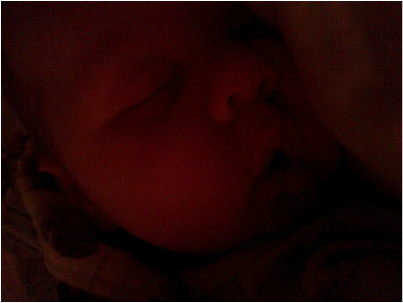 With my baby and my preschooler asleep on either side, I am grateful especially to Sheila Kippley, one of the founders of CCL, now of Natural Family Planning International, for this quiet moment of beauty. It wouldn't have happened without her. It is my hope that I too can leave a legacy of quiet moments of beauty in the lives of my own children, and in the lives of other families I have been given the privilege to touch, whether in person or through the written word. I would love to hear how AP has influenced your life; contribute to the conversation by making a comment! |
Details
Archives
November 2023
Categories
All
Enter Your Email Address to get St. Croix Birth Blog Posts in Your Inbox(We don't collect your email address and you won't get anything else from us.)
|
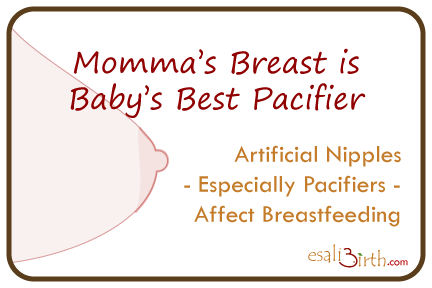
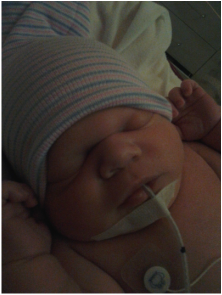
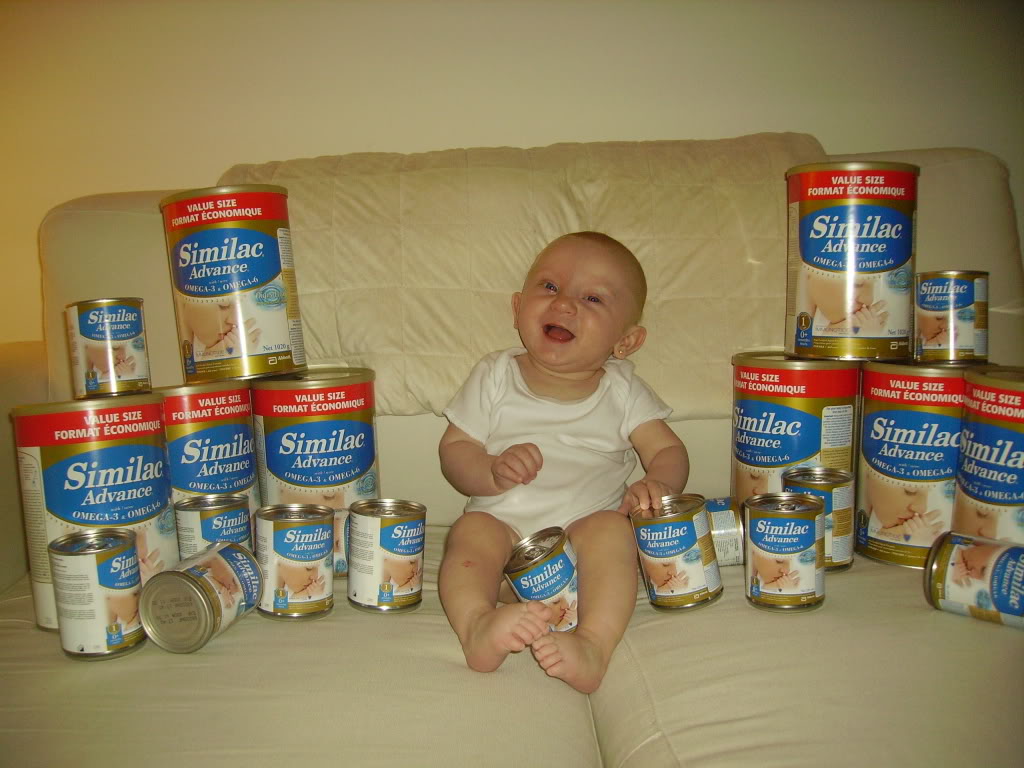

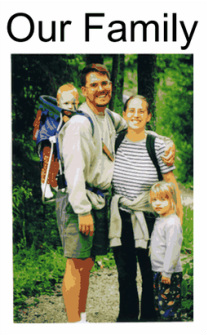
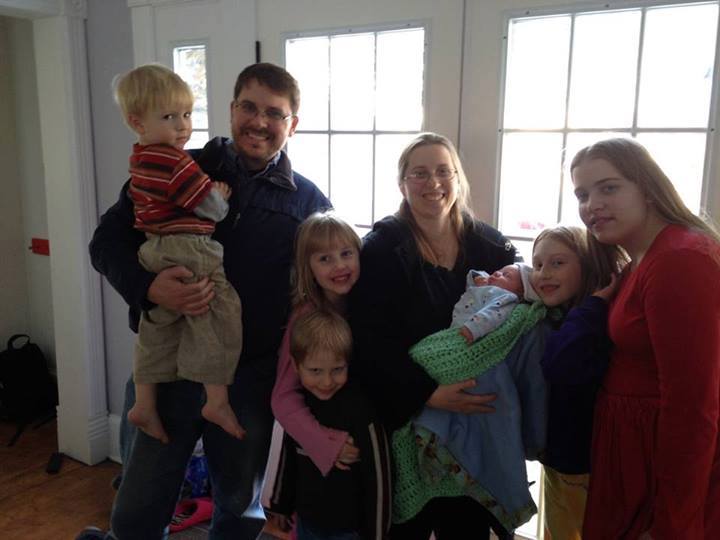
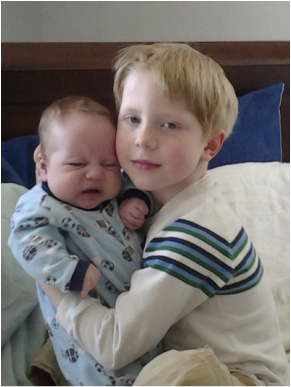

 RSS Feed
RSS Feed